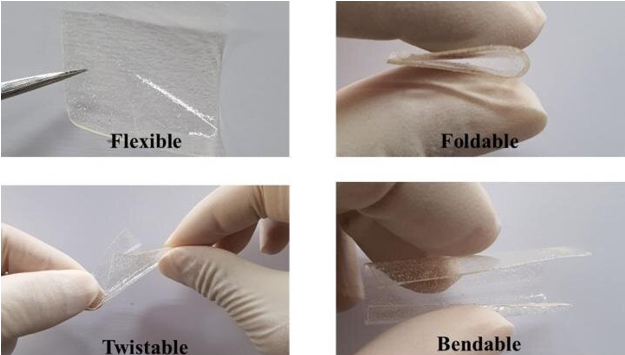
December 21, 2021
One of the critical issues with the current trend of bigger and bigger screens found on modern smartphones is that they get more easily damaged due to their size. On top of that, these larger, more complex screens are usually more expensive to replace or repair.
Scientists from Korea might have found a solution for this particular problem as they developed a self-healing material that can self-repair cracks and even restore damaged functions. Image Credit: encierro via Shutterstock / HDR tune by Universal-Sci
Image Credit: encierro via Shutterstock / HDR tune by Universal-Sci
The Korean researchers focused their attention on a material called CPI (colorless polyimide). The use of this material is widespread. It possesses excellent durable properties alongside good tensile strength, making it ideal for application in industries such as the aviation industry. Still, the material is also used in solar cells and flexible screens for foldable devices.
Several efforts have been made to improve the durability of CPI as the potential return on investment is enormous due to the material's large-scale use. Unfortunately, these attempts have, as of yet, not been successful. This makes potential self-healing technology even more relevant.
One of the challenges the research team encountered was that any self-healing technology should not tamper with the beneficial properties of colorless polyimide, including its transparency. The scientists opted for a creative solution, using linseed oil obtained from the flax plant seeds, also known as linseed. Linseed fibers are commonly used to make linen, while the researchers are more interested in its seeds. Perhaps there is some potential for synergy there. Oil extracted from flax seeds is quickly hardened and ideal to use as a coating material.
Using the flax oil, the team constructed oil-loaded microcapsules, with which they built the topmost healing layer by mixing them with silicone. When damage occurs, these microcapsules are supposed to break, leaking the flax oil filling the cracks, which quickly hardens, effectively restoring the screen. A considerable benefit derived from the mixed oil's liquid properties is that it naturally finds its way to the damaged area, repairing any local blemishes. ile:///C:/Users/Owner/AppData/Local/Temp/msohtmlclip1/01/clip_image005.jpg" alt="The self healing layer is flexible, twistable, bendable and foldable - Image Credit: Korea Institute of Science and Technology( KIST)" width="624" height="380" />

The self-healing layer is flexible, twistable, bendable, and foldable - Image Credit: Korea Institute of Science and Technology( KIST)
Another advantage of this semi-liquid solution is that it is usable on hard materials such as smartphone screens. Current self-repairing technology can only be applied to soft materials. The idea here is that the soft material melts by applying heat, smoothing out scratches and other marks. The microcapsule material renders an additional liquid layer on top of hard materials; this layer only becomes liquid when damaged. It can do so at room temperature without any additional heat requirements. It quickly hardens after it is exposed, making the surface hard again. The healing process can be performed within only 20 minutes as the material interacts with UV light. Simple but ingenious.

